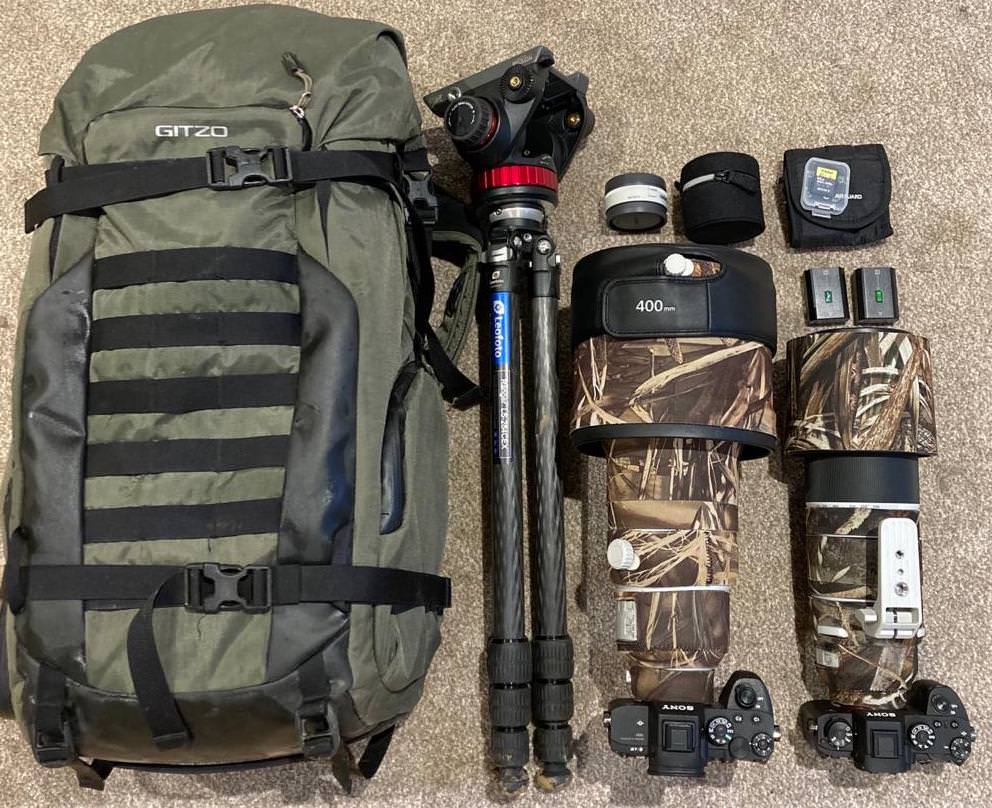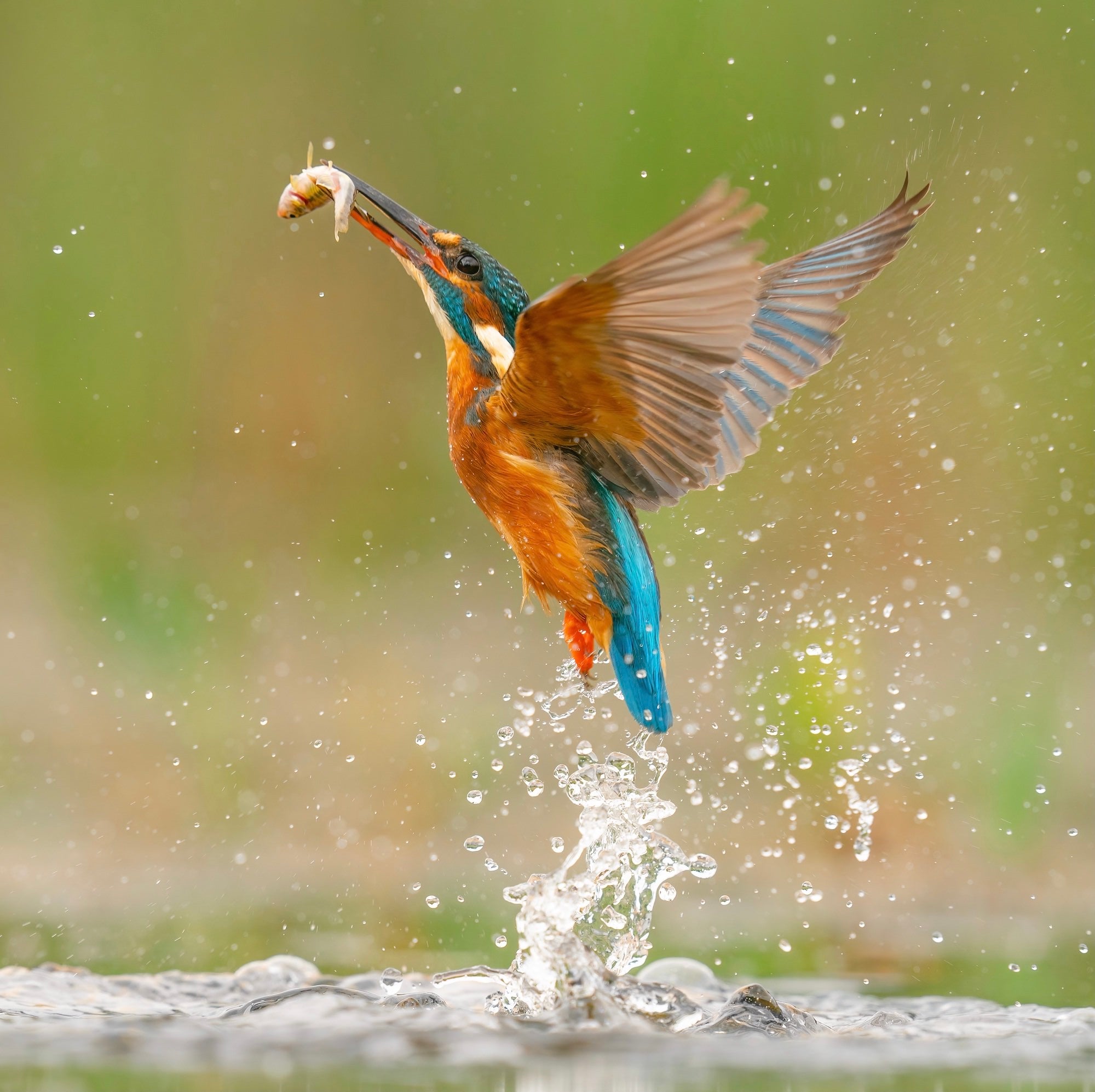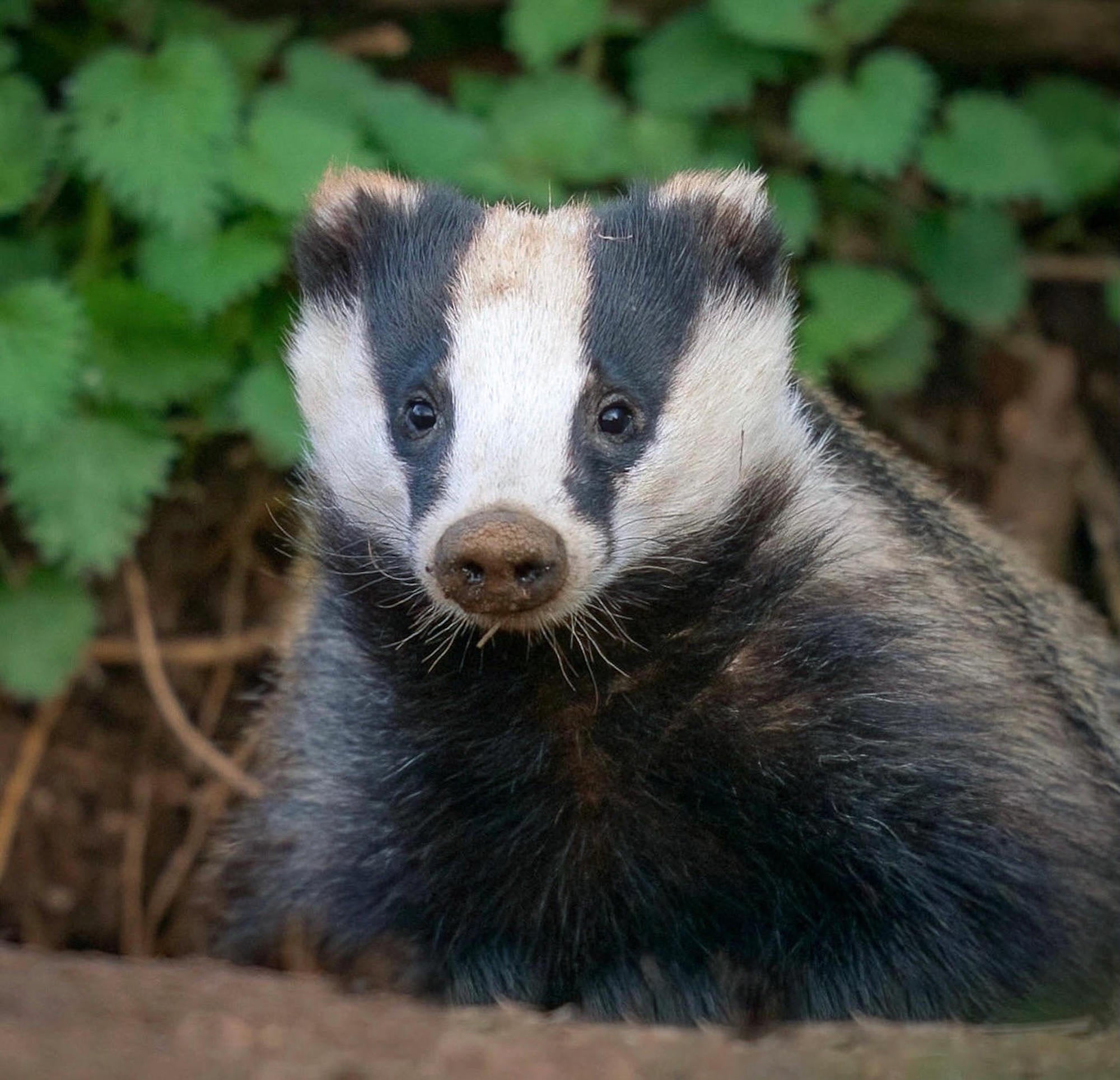We connect with amateur bird and wildlife photographers Nathan and Jessica Jones @nathan_and_jess_jones to learn more about what you’ll find in their bag for photographing wild subjects in their natural habitat.
Nathan and Jessica Jones (@nathan_and_jess_jones) are amateur bird and wildlife photographers from Leicestershire, England. Their interest in photography started during the first Covid lockdown, March 2020. "We both have an interest in birds and wildlife and love to get close and capture our subjects in their natural habitat. We have chosen our kit carefully to get the best possible images." We caught up with them to learn more about which Sony Alpha cameras and Sony lenses you’ll find in the wildlife photography kit – see what’s in their bag below.

Amateur wildlife photographers Nathan and Jessica Jones give us a look at the two Sony Alpha cameras and two Sony lenses they use to photograph wildlife in their natural habitat.
Cameras
Sony Alpha 7R IV: We chose this camera because it is such a great all-rounder. It has a 61-megapixel full frame sensor which allows us to crop in on smaller subjects whilst retaining a lot of detail. Another very important quality is the camera’s silent shutter. This allows us to get close to our subjects without disturbing them.
For example, this image of a barn owl would not have been possible without the silent shutter. Although we were hidden in ghillie suits, their hearing is so sensitive that the noise of a shutter would have scared it away.
Photo by Nathan & Jess Jones. Sony Alpha 7R IV. Sony 400mm f/2.8 G Master.1/1000-sec., f/4, ISO 800
Sony Alpha 9: We chose this camera as a partner to the Alpha 7R IV. This camera has an amazing autofocus system and matched with its high speed continuous shooting of up to 20 fps, it allows us to capture some amazing action shots. Both cameras have different advantages, allowing us to capture a range of shots.
This image of a kingfisher was taken with the Alpha 9. The 20 fps really helped us capture the perfect moment just as the bird left the water and the amazing autofocus ensured the photograph was nice and sharp.

Photo by Nathan & Jess Jones. Sony Alpha 9. Sony 400mm f/2.8 G Master. 1/3200-sec., f/5.6, ISO 400
Lenses
Sony 400mm f/2.8 G Master: We chose this lens because of its amazing quality and versatility. The wildlife we encounter are often more active at dusk and dawn, when the light can be low. The low F stop of this lens allows us to use a higher shutter speed whilst keeping the ISO low. This lens is fairly light allowing us to carry it around with ease
This badger photograph was captured in very low light. The quality of the lens and camera combined with its low f/2.8 aperture allowed us to get the image we were looking for.
Photo by Nathan & Jess Jones. Sony Alpha 9. Sony 400 f/2.8 G Master. 1/400-sec., f/2.8, ISO 1600
Sony 200-600mm f/5.6-6.3 G: This lens has a place in our bag because it’s so versatile. Its internal zoom allows us to quickly change the focal length when needed. When capturing wildlife, you can never have enough reach so the 600mm is really useful. It’s also such a light weight lens that it is easy to hand hold if necessary.
This heron image would not have been possible with the 400mm f/2.8 G Master prime lens however, the 200-600mm f/5.6-6.3 G enabled us to quickly change the zoom allowing us to fit both bird and its reflection into the frame.

Photo by Nathan & Jess Jones. Sony Alpha 7R IV. Sony 200-600mm f/5.6-6.3 G. 1/500-sec., f/5.6, ISO 2000
Accessories
Sony 1.4X Teleconverter: We mainly use this on our 400mm lens to increase the focal length to 560mm. This does not degrade the performance of the lens.
Sony 64GB Memory Cards: These cards are very quick and reliable and it is always handy to have a few spare in the bag.
Lens Coats: We use these to protect the lens as well as for added camouflage.
Leofoto Tripod: This is a lightweight, sturdy tripod and is good value for money.
Manfrotto Video Head: We prefer to use a video head for its fluid movements and allows us to easily switch from stills to video.
Gitzo Bag 45L: This is a strong, reliable bag that fits all of our equipment and keeps it safe. Its capacity allows us to fit in all of our equipment and it is comfortable to carry.
See more of Nathan and Jessica’s work on Instagram @nathan_and_jess_jones.



